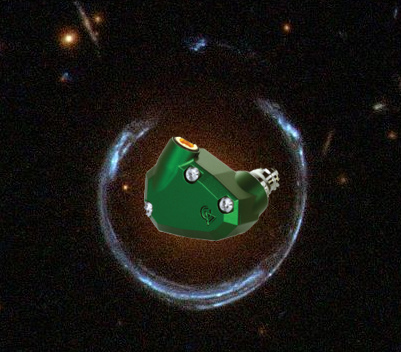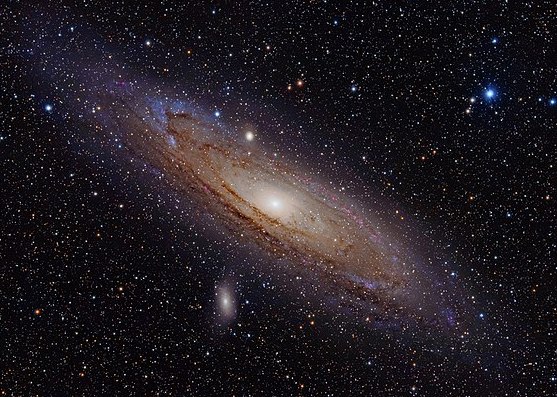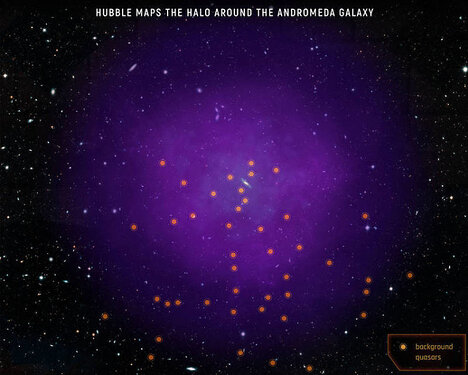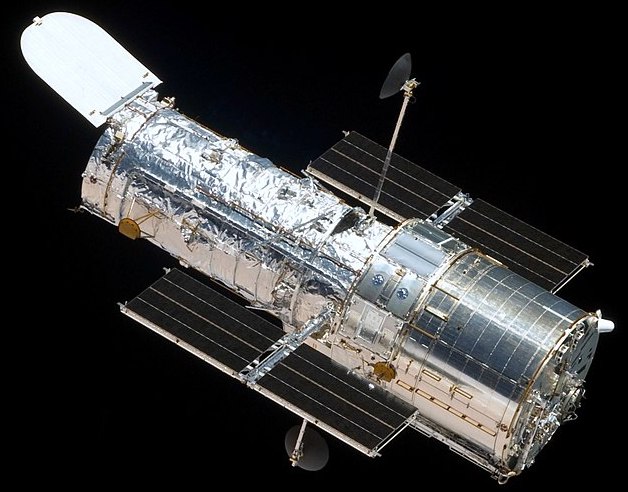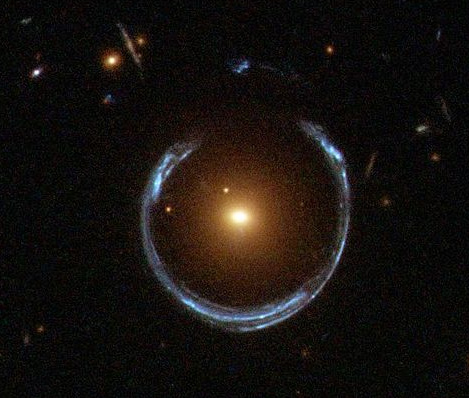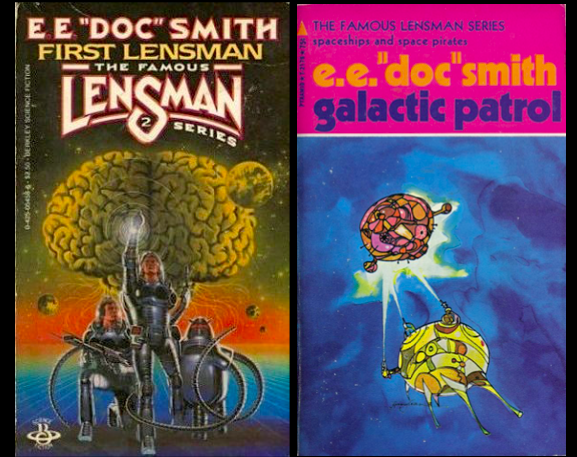Did you know the Campfire Andromeda is so good it has a ghostly halo that can only be seen under ultraviolet light?
Kidding of course. I’m actually going to go on about the astronomical Andromeda. Surely, if there can be OT threads on topics like movies and whisky, why not one on the greatest real-life adventure of our time — scientific discovery? Here’s my inaugural contribution. Hope other folk will follow suit and add relevant posts of their own.
Mind-boggling Sleuthing Decodes Andromeda’s Halo
The AMIGA project just published their findings as to the chemical composition of the million light-year extending gaseous halo around our next-door neighbour, the Andromeda galaxy. Every galaxy has a halo, or sphere of particles that drift away from the main part of the galaxy over time. Very interesting, I’m sure, if you happen to be an astrophysicist, to know what that’s made of. Nice to know there’s a fog of heavy element atoms out there just waiting to be harvested (grin). What boggles me is how they made their measurements. They merely used the Hubble telescope’s spectroscopy attachment to take the spectra of the ultraviolet light of 43 quasars located behind a broad region around Andromeda. Then they merely calculated what was missing from the quasar light, which gave the fingerprints of the chemicals in the halo gas.
When I was a teenager the word quasar, like the word quark, was this mysterious outer space enigma that Sunday supplements loved to wax on about. There were these things smaller than galaxies, but brighter, that were so far away the new and huge Palomar telescope could just barely “see” them at all let alone show any detail. Seemed impossible. I doubt there were 43 quasars located back then in all of space, let alone in the vicinityaround Andromeda.
On top of that, astronomy at the time wasn’t and couldn’t be done on ultraviolet light from other stars because the earth’s atmosphere absorbed it. Instead, radio astronomy was the big new thing, going in the opposite direction to very long wavelengths. (I thought radio astronomy would be nearly useless, given how little resolution it could provide. Boy, was I wrong about that.)
Eventually, the Hubble scope was put in orbit. I can still vividly recall the punch-in-the-gut feeling when the first testing showed the mirror had a built-in out-of-focus error to its shape. You could drink yourself silly, take off your glasses and still see better than that. Then a few years later, came the thrill of the exactly opposite emotion, when some truly wizardly computer+math work provided a pixel-by-pixel data correction that effectively put a 20-20 pair of eye glasses on the Hubble’s telescope. Everyone’s seen the spectacularly gaudy false-colour astronomy photos over the past several decades that resulted from this fix. But the Hubble could do ultraviolet? Again, if someone had told me I would have shrugged.
Gravitational Lensing Observations now Routine
A similar slight-of-hand magician’s trick that’s now being done routinely in astronomy is to use the gravitational lensing effect from one massive but distant object to learn the secrets of some even more distant and fainter object behind it. In the upper of the two photos above the light from the central red galaxy warps the light from an otherwise hidden blue galaxy far behind it into an apparent blue ring around it. Gravitational lensing. The term would have been meaningless to my teenage self or any science supplement writer at the time. It would have sounded like the Galactic Lensman of E.E. Doc Smith’s space opera novel series. In fact, it’s a turbo-charger for light magnification that the universe provides absolutely free of charge for anyone with the smarts to figure out what’s going on.
Yet the same principle — predicted by Einstein’s general relativity — was used in 1919 to provide some early proof that the theory was correct. Sufficiently strong gravity along the way bends the path light travels along from point A to point B. All you need are computers a million times more powerful than the vacuum tube or discrete transistor monstrosities of that era to again untangle the complexities of that gravity/light tug of war.
